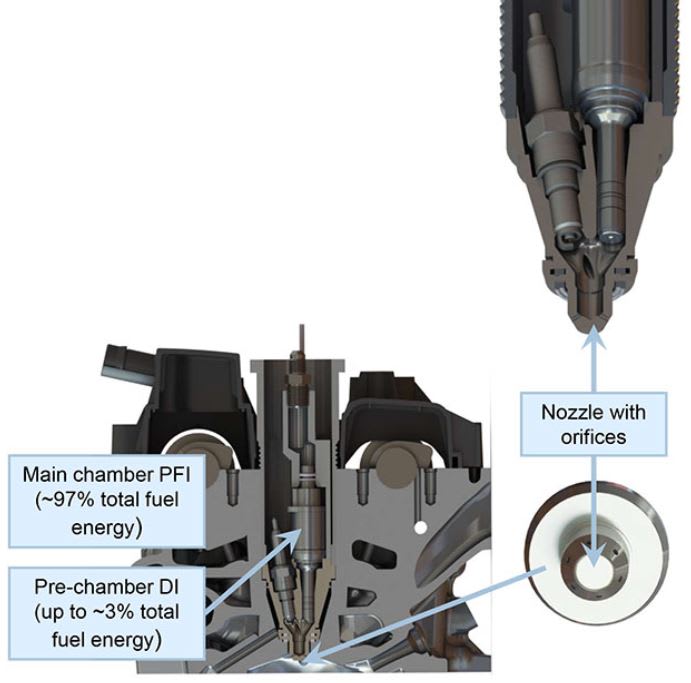It's going to be very interesting to see how Mahle packages the injector and spark plug into an affordable engine that isn't serviced after every use (see picture below taken from the article at
The point of all these alternate ignition systems is to allow operation with a lean mixture which would, in turn, allow designers to eliminate throttling in gasoline spark ignition engines. This objective is similar to that of Homogeneous Charge Compression Ignition (HCCI) without the control headaches. Mazda's spark ignited HCCI (SkyActiv-X) seems much simpler than Mahle's jet ignition, though it does require charge stratification to work. The purest "spark" solution would be a laser with a prismatic aperture into the chamber allowing simultaneous ignition in multiple locations around its volume. The best solution overall, however, remains HCCI in my opinion.
I agree with Hemi that internal combustion engines are far from the
end of the road because electrifying the entire US transportation fleet so far
down the road. At present, we make 4.18 trillion kWh of electricity per year. 65% of the total, 2.7 trillion kWh, is from fossil fuels while only 17% is from renewables. Switching to electricity generated from fossil fuels accomplishes nothing. At the same time, we currently produce 4.3 trillion barrels, or 135 trillion gallons, per year of fossil fuels. Each gallon contains around 36.6 kWh of energy, so 135 trillion gallons contains about 5 quadrillion kWh. Internal combustion is about 40% efficient, so only about 2,000 trillion kWh is actually put to work. That's 478 times the amount of electrical power we currently generate from *all* sources and 2,810 times larger than our electric production from renewables. Going 100% electric is a huge challenge and is going to take a long time. Adding hybrid capability to a diesel using electronic valves and fueled with GTL (gas to liquid) fuel will result in an astonishing level of efficiency and cleanliness in the meantime.

